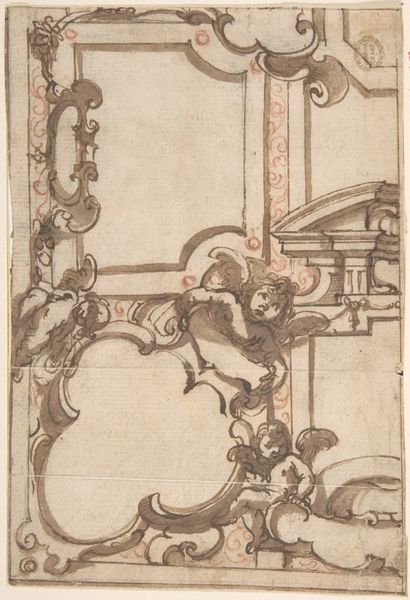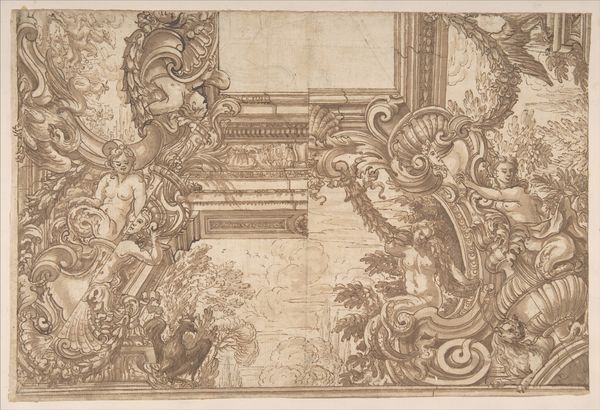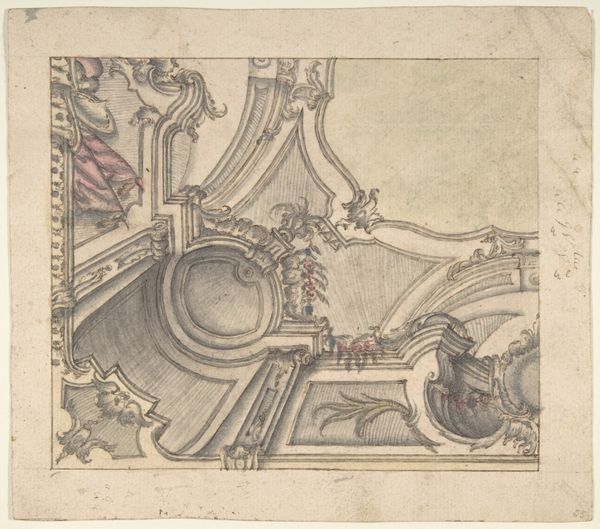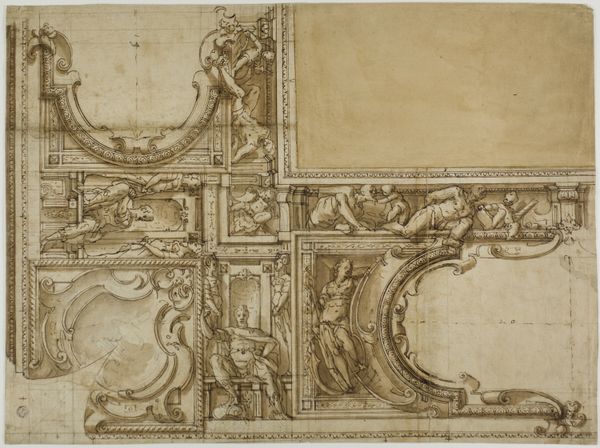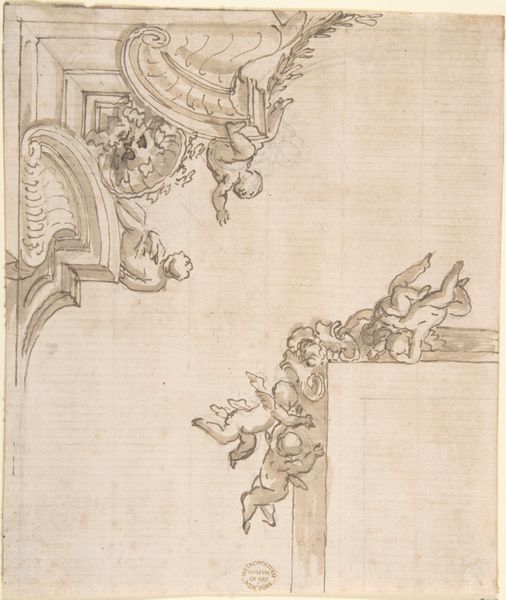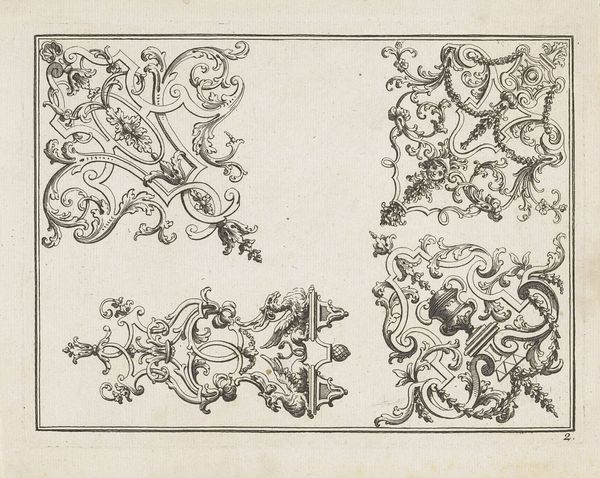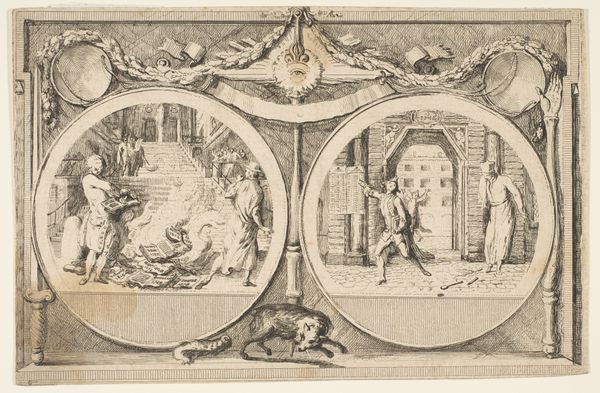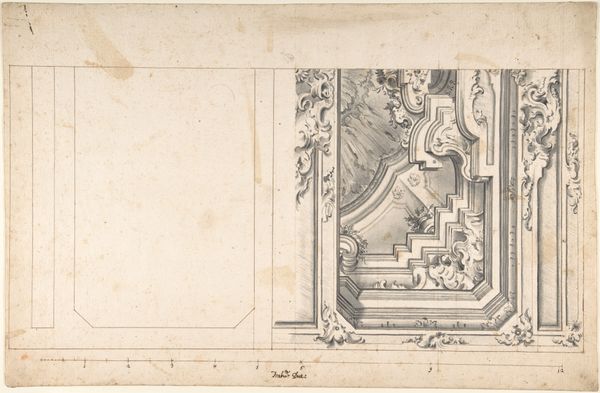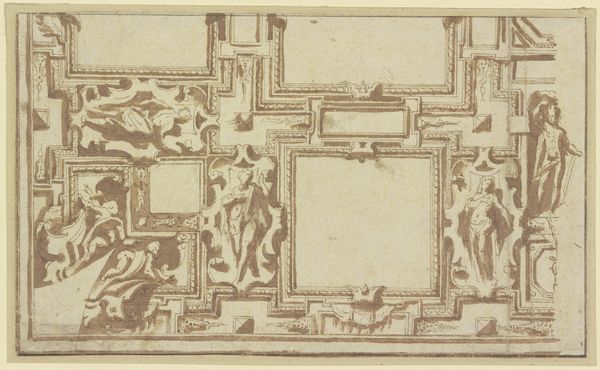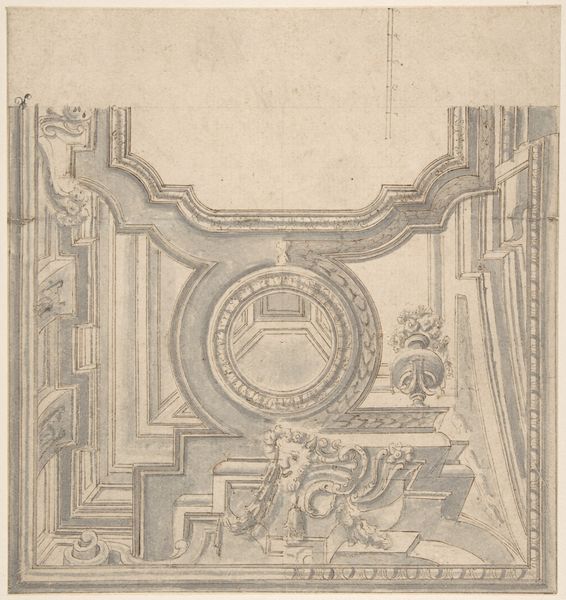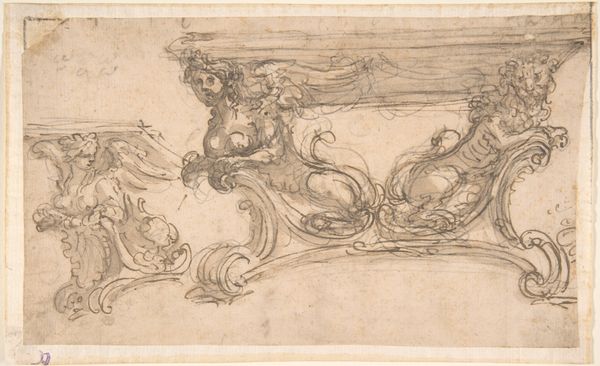
drawing, print, ink, pencil
#
drawing
# print
#
figuration
#
11_renaissance
#
ink
#
coloured pencil
#
geometric
#
pencil
#
line
#
academic-art
#
decorative-art
#
miniature
Dimensions: 5-1/8 x 7-9/16 in. (13.0 x 19.2 cm)
Copyright: Public Domain
Curator: Here we have a drawing titled "Decorative Design," likely created sometime between 1600 and 1700. It's an ink and pencil piece, showcasing an intricate geometric layout interwoven with figuration. What are your immediate thoughts? Editor: Well, looking at it, there's this immediate sense of airy lightness despite the precision of the lines. It feels like a carefully constructed dreamscape. All those chubby cherubs at the bottom seem a bit cloying, almost weaponized with that kind of pervasive cuteness, if you ask me. Curator: The cherubs do contribute to the Baroque aesthetic which, in its time, was often a visual expression of power and the church’s reach into the lives of ordinary people. Do you see it as manipulative? Or are they just ornaments of the period? Editor: It’s difficult to disentangle those two things entirely, isn’t it? They weren't merely decorative. These images were a vital component of an overwhelming visual vocabulary used to reinforce specific narratives. Those blank geometric spaces at the center could be intended for the coat of arms of some powerful dynasty. So even decorative details carried weight. Curator: Precisely. Considering that, think of the context of its display, say within a palace or a prominent church of the era. How might it be seen by different people, nobles, clergy, commoners? How did it function to further those institutions? Editor: It presents a sort of hierarchical gaze. Power literally looming over you from on high and literally everywhere, designed to induce humility and reinforce social structure through visual saturation. Curator: Interesting how a drawing on paper can tell us so much about its contemporary culture. It becomes a lens through which to view socio-political dynamics. Editor: Agreed. Looking closely at the details here gives an interesting access point into the past. From a purely artistic viewpoint, I find the technical proficiency commendable but always need to push to unearth power relationships in art. Curator: It’s always useful to examine those intersections, those visual arguments that artworks inevitably make. Thank you for your thoughts.
Comments
No comments
Be the first to comment and join the conversation on the ultimate creative platform.
